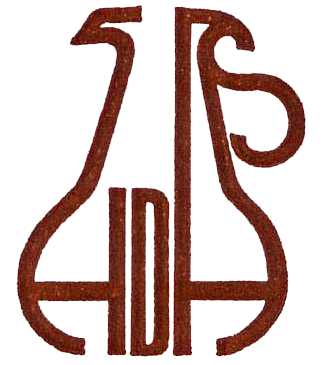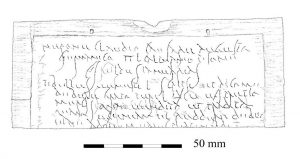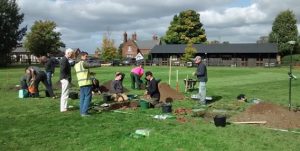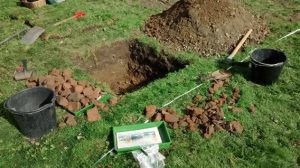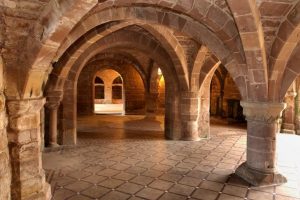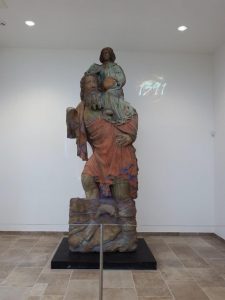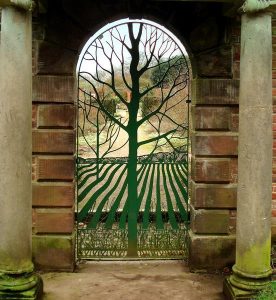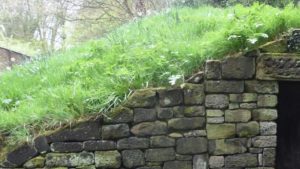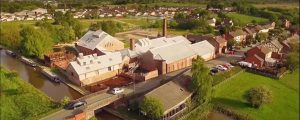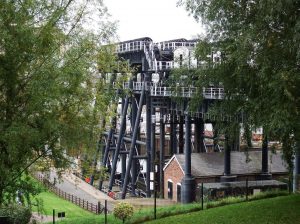volume-7—2000—2004/Newsletter-356-November-2000
|
No 356 NOVEMBER 2000 EDITOR DAWN ORR
HADAS’ OWN – THE EVER SUCCESSFUL MINIMART …….. SATURDAY, 14th OCTOBER
The annual cry of the MINI MARKETEER rises above the busy hum of chatter and hurried movement. In and out the front door we go, unloading the various elasticated vehicles – we thought there wouldn’t be any, but here they are, and the stalwarts are on parade. Absolute treasures every one! “Hullo – haven’t seen you for ages :” “You need a man (?!) – here – let me help you :” “When’s the coffee coming round ?” “Have you had a meringue yet? Best ever this year!” “Asparagus quiche, please…” Boxes, bins, bundles – open, unpack, lay out – ah, “there’s the rub…” An object (not “of art”) emerges from careful layers of wrapping and the cry we heard comes up s “Does anyone … ?” followed shortly by “Is it priced ?” and inevitably “it” lands on the Bric-a-brac tables- a foursome in a row this year and a welcome relief from the log jam. If I could find my way into the 21st century, I could put this onto a disk (sic!) and just ‘tweak it’ a bit each year, for indeed the formula tried and true works every time – even when effort has been made to cut it down or make it ‘MICRO’. So – the funds are still rolling in as we go to press – total to date £950 Don’t let’s destroy THE DOME – just put Dorothy in charge of it! HADAS DIARY
Tuesday, November 14th HADAS LECTURE ‘Medieval London Bridges – Lost & Found’ by Bruce Watson
Tuesday, November 28thCHRISTMAS VISIT to GEFFRYE MUSEUM – ‘English Domestic Interiors through the Ages’ followed-by DINNER at PRIDEAUX HOUSE, HACKNEY. (Details and app. form encl.) Tuesday, January 9th HADAS LECTURE An evening with our member DEREK BATTEN sharing the TIME TEAM’S visit to his ‘CASTLE’ at Towcester, prior to its showing on TV.
Tuesday, February 13th HADAS LECTURE ‘Aspects of Roman Tunisia’ by KADER CHELBI
Note. LECTURES ALL START at 8pm prompt at AVENUE HOUSE, 17 EAST END RD. FINCHLEY N3 3QE followed by question time and coffee. We close promptly at 10 p.m.
The October Lecture – Tuesday 10th October, by Graham Scobie, who is publicity and- communications officer of Winchester City Museum. Tessa Smith reports: Several of us who visited Winchester as part of the Isle of Wight weekend last year met the lecturer, who showed us the excavation at Hyde Abbey. We saw how far the Abbey had extended and where the high altar was thought to have been. His lecture was a follow–up to that visit. Archaeologists search for body of Alfred the Great in Winchester car park. The media had, of course, got it wrong again, under the auspices of Winchester City Museum, Graham Scobie and his team have been on a dig – not for the body of Alfred, and not in the car park, but in a site claimed to be that of Alfred’s grave at Hyde Abbey, in the parish of St. Bartholomew, north of Winchester Cathedral. The Normans established the Cathedral on the site of King Alfred’s Saxon church, where he was originally buried. At the Dissolution of the monasteries, his body was moved and re-buried near the high altar at the New Abbey at Hyde. Lead tablets had been found on 3 tombs, thought to be those of the King, Ealhswith his wife, and his son, Edward. Today the Gate house or the Abbey remains, as does the parish church of St. Bartholomew. Five years ago, Graham began a community project to excavate at the Hyde Abbey’s outer court, to try to gain understanding of the origins of the Abbey. The brief was to excavate only to post-medieval levels in an attempt to confirm that it was the site of Alfred’s grave. The community project was not, however, the first dig in this area. In the 18th century the site was bought by the local authority to be converted into a goal during construction of a garden for the governor, large stones were discovered which revealed a stone coffin encased in lead, with a body partly corrupt. Subsequently, more coffins were found and the lead sold for 5 guineas! An 18th century plan of this area identified the sites of the three graves. In 1866, trenches were excavated on the site, once more looking for evidence of Alfred chalk-lined coffins were uncovered but no human remains. This was the time of Burke and Hare and local animosity towards the excavation caused it to be hurriedly terminated. In 1906, a local landowner excavated large pits by the high altar, using prisoners as a labour force. He claimed that this was the area where the 3 coffins had originally been dug up. Graham’s excavations have uncovered, the foundations of an apsidal east end of a church building, which had re-used earlier stone. The stone shape of a woman laid on her side, with some original paint still visible, is astonishing evidence. The team has also uncovered the 3 pits previously excavated in 1903, in front of the possible site of the high altar. A bone identified as a human hip bone has been dated to 1780. The on-going community dig is intended to give local people ‘hands-on’ archaeological experience, 1,200 people last year, with a maximum of 45 at one time. The local archaeological society was also invited to take part. There are many questions unanswered … Graham foresees 5 more years digging on the site. RIFLEMAN ALFRED CROOK 1899 – 1917 A soldier of the Great War with no known grave. By Myfanwy Stewart This obituary is based on original letters and documents cherished by his mother until her death, bequeathed to her daughter and then inherited by the writer. Sarah and George Crook were married at the parish church, New Southgate in 1889. She had signed the register but George had only been able to mark it with a cross, as had one of the witnesses. They were a poor family and between 1891 and 1895 two sons and a daughter had died in infancy. Their son Alfred was born in April, 1899 but his father died young and Sarah married Richard Sindle in 1906. He survived the Salonika campaign and kept his ticket from Salonika to Friern Barnet as a souvenir. They both lived into their eighties. In 1913, Alfred was working as a delivery boy and a character reference for a new job, written in March 1914, describes him as “civil and obliging”. However, by July 1914, aged only 15, he had enlisted in the army and was in the 6th Battalion of the Rifle Brigade. His army Certificate of education shows he was competent in arithmetic (“compound rules and reduction of money, avoirdupois weight and linear measurement, addition and subtraction of vulgar fractions, a simple messing account”), that he was proficient in writing regimental orders from dictation and that he could write a letter. From the beginning the new recruits were suffering from various ailments and March 1915 Alfred was in an isolation hospital at Winchester for four days with a fever but was soon dispatched to France. In August a severe attack of group B typhoid was diagnosed and the matron of the isolation hospital in Etaples wrote to his mother that he was “very weak and ill” but that he sent his love. The padre, writing on the same day and hoping to reassure Alfred’s mother describes him as “very ill…but wonderfully bright at intervals… and a firm favourite and quite happy and content”. He recovered by the end of September but 28 days of Fever left him with an enlarged spleen and in October he was sent home on the SS hospital ship “Dieppe”, as shown by his kit bag label. Alfred convalesced at Woodford and by November was back in barracks at Croydon. He was able to go to a friend’s wedding at Christmas but was inevitably sent back to France. On the 8th July 1916 he qualified as a signaler second class and later in the month (date uncertain) was at the Belgium front. A parcel had been sent by his mother containing clothes. Army shortages are shown by the fact that he thanks her for the jersey but asks her to send another parcel so that can change my underclothes”. In October he was on active service. Only cards were allowed to be sent and his mother received one written on the 4th October. Splattered with mud and almost illegible, it reads “I am going in to the firing line tomorrow night. Will write as soon as possible… am in the best of health. Cheerio, all will meet some day Alf xxx.” Alfred survived and in April 1917 was back in barracks in Sheerness, Kent. In a letter to his step father he writes “I am just about fed up with France, twice is enough for me”. He reveals that “Mother stopped me from going out again I am glad that she did”. He was optimistic that he would remain in England believing that the news from France was good, that the war could not last much longer and that “I think we have got them beat there”. I-le had served 3 years in the army and described himself as “an old squaddy”. Ominously all leave had been stopped except for special leave. He had formed a close friendship with a fellow soldier, Will. He always referred to him as “my chum” – and in September 1917 he made the fateful decision to volunteer for another tour of overseas duty to be with him in the same platoon. Alfred was soon back in the trenches but came out on the 301 September only to receive bad news. By a terrible irony, almost immediately after returning to France, Will had been injured in the knee and was subsequently repatriated back to Britain. On October 1st Alfred told his mother “I wish my chum was with me” and that “when you have a chum with you, a good one like Will, it cheers you up”. Sarah Crook had heard that her son had planned to bring Will home to meet her, she had worried about the state of their home. He wrote back to reassure her, saying that “my chum is the same as myself so you need not think anything about our home being humble”. In spite of being at the front, mail and parcels were still getting through to the men. In that first week of October, 10 letters were awaiting him from family and friends and this would keep him “busy”. By October 10th he could not hide the fact from his mother that conditions were bad and that he was depressed. They were having “very rotten weather ..rain every day”. Trench warfare was taking its toll on the young soldier and he writes to his poor mother “I don’t think I shall last till Christmas if this weather continues…My feet are still bad from the last lot I got last winter. If I get them wet I can hardly put them down to the ground”. His premonition about Christmas proved to be only too true. On the 22 October Alfred was still in the trenches but in better spirits as he had received a parcel from his mother. Another parcel got through in November, “packed well with nothing broke or damaged”. On the 11th he had “just come out of the trenches” again, he thanked her for the socks and gloves but said they were -expecting to go in the trenches again”. Field cards were issued to the men in the trenches with printed sentences which the men could delete, as appropriate. Alfred sent one on the l7th November, 1917 to his mother. It acknowledged her letter and said he was well. This was the last time he wrote because he was killed on December 1st 1917. On December 11th Sarah wrote a letter to her son which was subsequently returned to her with his effects. She does not know -how to bear” herself because she has not heard from him since the field card. “Something seems to tell me there is (something wrong ) as I have not heard … I pray night and day that you will have the strength to keep up…. It will be a poor Christmas for me for I shall be thinking of you. …God bless you and keep you safe”. On the l3th December, Sarah could not wait any longer and she wrote to the brigade officer at Winchester. He replied on the back of her letter telling her that no casualty had been reported but on the 20th she was informed that Alfred had been wounded but that his whereabouts were unknown. By February 1918 the Red Cross were making enquiries both for Sarah and his “young lady”, Flo, but without success until 10th July when they sent Sarah an eye witness account of her son’s last hours. Her horror can be imagined as she read the following report given to the Red Cross by a fellow rifleman. “On December the Battalion was behind the front line in reserve between Gouzeaucourt and Villiers Pluich. The Germans were attacking. The Battalion went up to reinforce the front line, and your son was left in charge of the tents. The men were driven back, and passed the place where your son had been left, and Rfn. Penny saw him wounded. He passed by a few yards from him and shouted to him, asking what was the matter, and Pte. Crook answered that he was wounded. Unfortunately it was impossible for Rfn. Penny to wait and see more of him, as the Germans were close behind. There was heavy firing going on at the time and I am afraid it is only too certain that your son must have lost his life in this way, for if he had survived and had been taken prisoner you would have had news of him long before this.” It was not until the 11th September 1918 that the official notice of missing presumed dead was sent. Sarah received £9.16s.8d back pay and his war medals. His effects included a purse, some photographs, cloth badges, cards, a full packet of Players Navy Cut cigarettes, her letter, written on the 11th December 1917 and part of the New Testament. She kept them all and they are now in the writer’s possession together with his letters, written on very thin paper in indelible pencil. He was 18 years old when he was killed and was mourned by his mother all her life until her death in 1952 at the age of 82. Wednesday 13th September – Visit to St. Lawrence Whitchurch Laurence Bentley. Tessa Smith reports on HADAS at Little Stanmore.
When the grand old Duke of Chandos made his fortune as the Paymaster- General to Marlborough’s army, he spent some of it building “a most magnificent palace” (said Daniel Defoe) at Canons, and reconstructing the ancient local church of St. Lawrence, which he also endowed with some magnificent plate. The palace was later broken up to pay Chandos’s son’s debts, but the church remains, as his memorial, and it was there, blessed with a perfect summer’s day, that we met on 13th September. Our brilliant guide was Sheila Woodward, and we could not have had a better. We began in the churchyard. God’s acre at St. Lawrence is a large one, two acres in fact, and the sense of rural seclusion is complete. We circumnavigated the church – clockwise of course -visiting the grave of an incumbent whose duties were frequently interrupted by residence in the debtors’ prison, and that alleged to belong to the ‘harmonious black- Smith’ immortalised by Handel. The reconstructed church represents, according to your principles, a degree of insensitivity to the past, or a creative self-confidence, unimaginable in our time. There were no style censors to prevent him, when the Duke commissioned the architect, John James, to destroy much of the ancient church in 1715 to rebuild, and the result is remarkable and unique for an English parish church. All that remains of the original is the tower, economically composed of flint, puddingstone, Reigate stone, re-used Roman tile and brick, into which has been driven a slightly pompous door, for the Duke’s private entrance, with a circular window above. This assortment of materials was, until recent times, covered by a decent coat of plaster – ‘Whitchurch’ means white church. The tower is topped by anachronistic battlements of Tudor origin; clearly architectural nostalgia is not a new thing. The rebuilt remainder of the church is of tidy brick, with large windows set in Roman arches, heavy plain stone dressings, a parapet and a slate roof, presenting in all a severe frontage to the public view from Whitchurch Lane, which leaves you totally unprepared for the “coup de theatre” which you are privileged to view when you enter. The scene is worthy of an 18th century opera, set, say, in Prague. The Duke was evidently influenced by his experience of the German baroque on the Grand Tour. From elegant plain box pews (enhanced for our visit by flowers left over from a wedding), you face an altar surmounted by a superb oak pediment, adorned with cherubs, supported by Corinthian pillars and pilasters in oak and flanked by life-size paintings. Behind this are more paintings and the organ used by Handel as the Duke’s Composer in Residence at Canons, and behind that a trompe l’oeil sky on the ceiling suggesting an infinite distance. When you have recovered your breath you see that the effect is truly theatrical, a proscenium arch in effect, backed by receding ‘flats’. In front of the altar, the ceiling is tinted with a luminous ‘Adoration of Jehovah’ matched at the opposite end of the nave with a good copy of Raphael’s ‘Transfiguration’ by Bellini. Baroque designers seemed to accept no limits, here, for example, they could, not use stone, they shamelessly imitated it with plaster; or paint to extend their vision. This artificiality enhances the sense of theatre, especially as the paintings are used as a trompe l!oeil to enhance the perspective as well as the richness of the scene. So here, the plaster ceiling is painted to give the effect of elegant mouldings and the almost mono- chrome ‘grisailles’ are used to decorate the north wall of the nave, with the effect of biblical statuary. When the wall was threatened with collapse in recent times, the church was closed for years while the plaster paintings were removed in sections, intact, and replaced after the wall had been repaired. This was a miracleof modern technology and a very expensive one. Several sections would have been as tall as a man and almost as wide as his outstretched arms. The Duke of Chandos would I am sure, given the choice, have repainted. At the rear of the nave at first floor level, opposite the altar but superior to it and the rest of the congregation, is the Duke’s private pew. This is like a Royal Box, and had a private fireplace, at that time the only heating in the church, stoked from behind the wall by servants in an adjacent pew. Bodyguards – Chelsea pensioners – occupied the pew on the other side. Leaving the nave on the north side, by the altar there is an ante-chamber to the Mausoleum, then the Mausoleum itself, designed by James Gibbs, in which the principal monument, apparently designed by Grinling Gibbons, shows the Duke in Romantoga and 18th century wig, flanked by two of his three successive wives, kneeling humbly beside him. This was carved in the Duke’s lifetime and he considered himself overcharged for it. The inscriptions on the monuments are typical 18th century advertisements of the virtues of their occupants, and like many advertisements are not entirely convincing. After this it was a relief to enter the Lady Chapel. Located in the base of the tower in 1966, in a simple traditional manner, it recreated the sense of long historical continuity of St. Lawrence Whitchurch. Final impressions are paradoxical. Here is a church in a setting of rural calm beside a busy road in a London suburb. Outside it appears rather severe to the passer-by, but inside it is voluptuously ornate, enhancing a sense of private privilege, as a rich man’s chapel, designed to impress with the glory of the Duke of Chandos as well as of God. Yet the Duke is now best remembered for employing Georg Frederic Handel.
Other Societies’ Events, Compiled by Eric Morgan
Mill Hill Historical Society Wednesday 8th November at 8.15 p.m. Talk : Charles II (Prof. John Miller)
Harwood Hall, Union Church, The Broadway, Mill Hill. Hornsey Historical Society : Wednesday 8th November at 8 p.m. Talk : Post Cards (Hugh Garnsworthy) Union Church Community Centre, cnr. Ferme Park Road/ Weston Park N 8. Finchley Antiques Appreciation Group : Wednesday 8th November at 7.50 p.m. Talk Furniture & The Grand Tour – Avenue House, East End Road, N 3. ‘Wesden Local History society Wednesday 15th November at 8 p.m. Willesden Suite, Willesden Library Centre, 95 High Road,NW 10. Hampstead Scientific Society : Thursday. 16th November at 8.15 p.m. Talk : Historical Stringed Keyboard Instruments (Dr. Lance Whitehead) Crypt Room, St. John’s Church, Church Row, N W 3. Enfield Archaeological Society : Friday 17th November at 6 p.m. Talk: Excavating the Crypt of Christ Church, Spitalfields (Jez Reeves) Talk : Parish Boundaries (Malcolm Stokes) Church Hall, rear of St. Andrew’s Church, Church Lane, Kingsbury. Friends of Barnet Libraries ; Monday 20th November at 8.15 p.m. Talk : The Secret Power of a Sacred Treasure Church End Library, Hendon Lane, Finchley, N 3.
The Jewish Museum, Finchley Sunday 26th November at 3.30 P.m. Talk : Whitehall & the Jews 1933 — 1948 (Dr Louise London) The Jewish museum, 80 East End Road, Finchley, N 3. The Finchley Society Thursday 30th November at 8 p.m. Talk : The Life of Samuel Pepys – his London (Andrew Davies) The Drawing Room, Avenue House, East End Road, Finchley, N
North London Transport Society: Saturday 18th November, 11 am-4 pm Enfield Transport Enthusiasts AUTUMN BAZAAR at St. PauIs Centre, Enfield Town, Corner of Church Street and Old Park Avenue. London & Middlesex Archaeological Society: Saturday 18th November, 10am-4pm – 35th LOCAL HISTORY CONFERENCE: Crossing The Thames at the Museum of London, London Wall. Admission £4.00. Details and application forms from: 36 Church Road, West Drayton, Middx UB77 7PX Museum of London Study Days. For Bookings telephone 020 7814 5777
SOAS Russell Square WC1; Near Eastern Collections, Collectors & Archives in Landon Monday 6th November The Petrie Museum of Egyptian Antiquities- Stephen Quirke, UCL.
Monday 20th November The Petrie Palestine Collection- Rachel Sparks, UCL.
‘The London Assessment Document’ Peter Pickering It was a decade ago that PPG16, the Planning Policy Guidance Note “Archaeology and Planning” came into force and brought archaeology into the planning process, so that archaeological work was funded by developers as a condition of their getting planning permission. In the same year English Heritage and the Museum of London Archaeology Service decided to produce an assessment of the current state of knowledge of the archaeology of Greater London. This was long known as the “London Assessment Document”; it has now, at last, appeared, under the title The Archaeology of Greater London – An assessment of archaeological evidence for human presence in the area now covered by Greater London.” It has seventeen accredited authors, not to speak of editors and the like. The result is an impressive synthesis, with descriptive chapters covering each period from the Lower Palaeolithic to the post-medieval, all but the last with its own gazetteer of sites and finds (necessarily selective, especially for the extensive Roman and medieval remains from the City and Southwark) and no fewer than fourteen separate maps, locating the sites and finds listed in the gazetteers. (The symbols on these maps are, I fear, rather small for my aging eyes, and people like me should furnish themselves with a magnifying glass.) There are, throughout, full references to original publications (the bibliography spans 27 pages) which does not make for easy reading, but then that is not the purpose of the book – it is rather, as it says, intended to serve as a research framework and as a wider archaeological management framework, and to meet local, regional and national enquiries. It is a definitive but not a permanent book – as the foreword points out, the more quickly it begins to seem in need of revision the more successful it will have been in achieving its aims. The text is broken up with a number of sober illustrations, some showing diggers in their traditional postures, and one or two where artists have been allowed to produce their impressions. Naturally, I had a special look at the items relating to the London Borough of Barnet. A word of caution here; since West Heath is in Camden and Brockley Hill partially in Harrow a first glance suggests something has been omitted; in fact, the heroic days of HADAS on West Heath have earned a full paragraph, longer than that on the Temple of Mithras. This publication will be followed by another one setting out an Agenda for future archaeological research in Greater London.
Commemorative Plaques As many members of HADAS will know, one of the society’s major current projects is to produce an updated version of our booklet on the commemorative plaques to be found in the Borough of Barnet. Liz Holliday, our former secretary, has completed the text and it is now undergoing final checking. There are a number of queries and Liz would appreciate some help from members All these queries can be solved by visiting a reference library and the Local Studies Collection. At present Liz is in the final stages of editing another book due to be published in December which must be ready for the printer for November. The queries are: 1. The date when the plaque to Peter Collinson was erected. 2. The date of publication of Fanny Trollope’s novel The Widow Barnaby – 1838 or 1839. 3. William Callley’s date of birth, 1788 or 1789. Date when the plaque was erected. 4. Who was Ranjitsinhji (a friend of the cricketer C.B.Fry) Harry Beck’s date of birth. 5. When did Amy Johnson obtain her pilot’s licence – 1928 or 1929? 6. Who was responsible (i.e. what organisation) for erecting the black plaque to Emil Savundra? 7. What date(s) was the series Handcock’s Half Hour broadcast? 8. What does “copt” in Copthall mean? 9. When did the Victoria Cottage Hospital open – 1887 or 1888? When was the plaque erected? 10. There is a plaque to Kenneth Legge in Windsor Open Space (N.3), Who was it erected by and when? Below is a complete list of the known plaques. Does any member know of any others lurking anywhere in the borough? PEOPLE: Birt ACRES, Ove ARUP, Harry BECK, William BLAKE, William CATTLEY, Eric COATES, Peter COLLINSON, Robert DONAT, Joseph GRIMALDI, C.B.FRY, Tony HANCOCK ,Myra HESS, Holbrook JACKSON, Gilbert JESSOP, Amy JOHNSON, Kenneth LEGGE, John LINNELL, Thomas LIPTON, David LIVINGSTONE, Nicholas MEDTNER, Eric MORCOMBE, James MURRAY, John NORDEN, Robert PAUL, Anna PAVLOVA, Frank PICK, Stamford RAFFLES, Harry RELPH, Emil SAVUNDRA, Fanny TROLLOPE, Raymond UNW1N, Harry VARDON, Benjamin WAUGH, Evelyn WAUGH, William WI LB E RFO RC E PLACES: Abbot’s Bower NW4, Cattle Pound NW4, Church House NW4, Copt Hall NW7 Court Leet & Court Baron NW4, Parish Cage NW4, Phoenix Theatre N2, Rosebank NW7.St. Mary’s School N3, St. Paul’s Church NW7, Sulloniacae (Edgware), Tollgate NW2.Tudor Hall (Barnet), Turnpike (Edgware), Victoria Cottage Hospital (Barnet), Wylde’s Farm NW11 We also need a picture researcher to help finalise the illustrations. For the People, section Joanna Cordoii has already identified those portraits that are available through the National Portrait Ga1le6 but there are still a number for which we need to find illustrations – either of people or the houses where they lived or the plaques themselves. For the Places section we need illustrations of the houses or their sites. Would someone be prepared to visit the Local Studies Collection to undertake a search? All answers to the questions above and offers of assistance to Liz Holliday please. |
